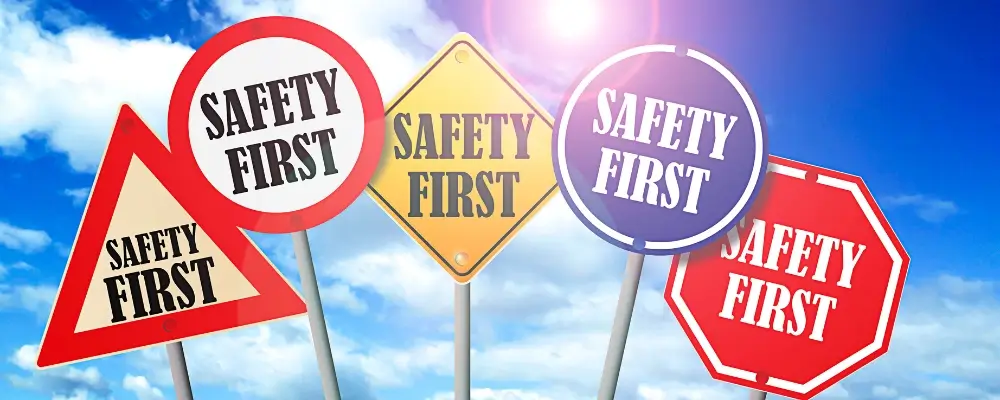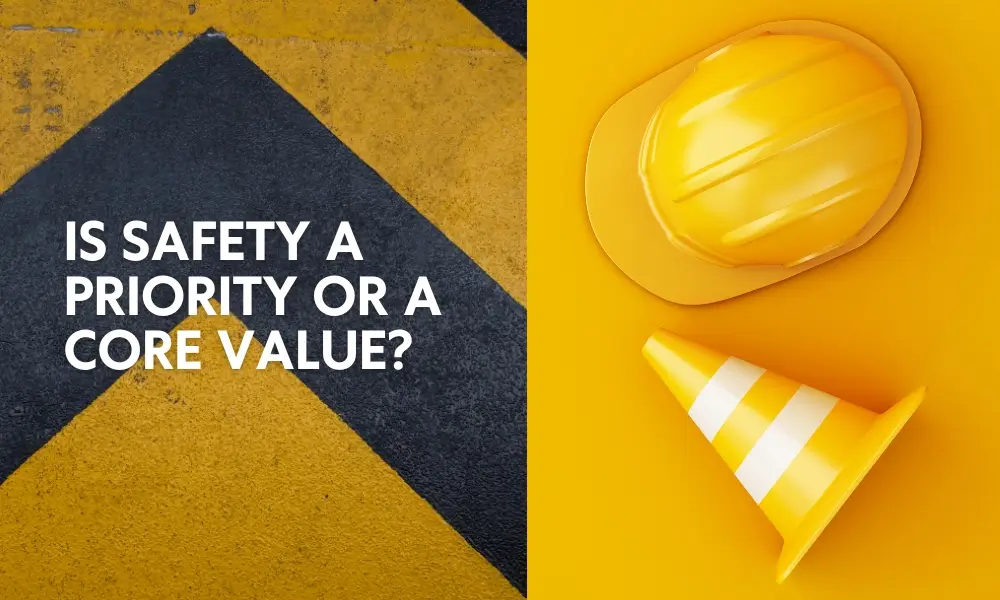In today’s fast-paced and ever-evolving business landscape, the conversation around safety in the workplace has never been more critical. This blog delves into the nuanced debate of whether safety should be regarded as a mere priority that shifts with organizational needs and pressures or if it should stand as a core value deeply embedded within an organization’s culture and operations.
Through exploring the distinctions between priorities and core values and examining the implications of treating safety as either, we aim to shed light on how businesses can more effectively integrate safety into their foundational principles, ensuring it transcends beyond a temporary focus to become a permanent fixture in their organizational ethos.
Safety Value: Is Safety a Priority or a Core Value?
In organizational culture and ethics, the distinction between what constitutes a priority and what is considered a core value is often a topic of intense discussion. This is particularly true when it comes to safety. The debate around whether safety should be treated as a priority or a core value is not just semantic; it reflects deeper beliefs about how safety is integrated into the fabric of an organization. This article explores the nuances of safety as both a priority and a core value, offering insights into how organizations can effectively embed safety into their operational and cultural DNA.

Understanding Priorities and Core Values
Before delving into safety specifics, it’s essential to differentiate between priorities and core values.
Priorities
Priorities are important tasks or principles that are currently in focus. They are often dynamic, changing in response to external pressures, internal goals, or specific timelines. Priorities can be reordered based on the situation, reflecting an organization’s immediate focus.
Core Values
On the other hand, core values are an organization’s fundamental beliefs. They are the guiding principles that dictate behavior and action. Unlike priorities, core values are not meant to change in response to the business climate or trends. They are deeply ingrained in the organization’s culture and serve as a constant north star for decision-making, behavior, and strategy.
Safety as a Priority
When safety is treated as a priority within an organization, it is considered extremely important and given precedence over other initiatives. This approach can be highly effective in the short term, especially in response to specific incidents or regulatory requirements. Organizations may allocate significant resources, attention, and effort toward safety initiatives, training, and compliance to mitigate risks and protect employees.
However, the inherent limitation of prioritizing safety is its temporary nature. As priorities shift in response to new challenges or objectives, the focus on safety can wane, potentially leading to inconsistencies in safety practices and outcomes.
Safety as a Core Value
In contrast, when safety is embedded as a core value, it becomes an integral part of the organization’s identity. It influences every decision, action, and strategy, from the highest levels of leadership to the front-line employees. Safety is not seen as a box to be checked or a target to be achieved temporarily but as a continuous commitment to the well-being of employees, customers, and the community.
Organizations that embrace safety as a core value demonstrate a few key characteristics:
- Consistency: Safety practices and principles are consistently applied, regardless of external pressures or priority changes.
- Empowerment: Employees at all levels feel empowered to take action on safety concerns, knowing their voices will be heard and valued.
- Integration: Safety is integrated into all aspects of the organization’s operations, from planning and design to execution and review.
- Leadership Commitment: Leaders model safety behaviors and make clear that safety is non-negotiable, reinforcing its status as a core value.
Making Safety a Core Value
Transitioning safety from a priority to a core value requires a deliberate cultural shift. This process involves:
- Leadership Engagement: Leaders must consistently communicate the importance of safety and model the behaviors they wish to see throughout the organization.
- Employee Involvement: Engaging employees in safety discussions, decision-making, and initiatives helps build a safety culture from the ground up.
- Continuous Improvement: Adopting a mindset of continuous improvement in safety practices ensures that safety remains a dynamic and integral part of the organization.
- Recognition and Accountability: Recognizing and rewarding safe behaviors while also holding individuals accountable for safety violations reinforces the importance of safety as a core value.
Conclusion
The debate between safety as a priority and a core value is more than semantics. It reflects an organization’s commitment to the well-being of its people and the sustainability of its operations. While treating safety as a priority can yield short-term gains, embedding safety as a core value ensures a lasting impact, fostering an environment where safety is woven into the organization’s very fabric. Achieving this transformation requires a concerted effort from all levels of the organization, led by a committed leadership and supported by an engaged workforce.

